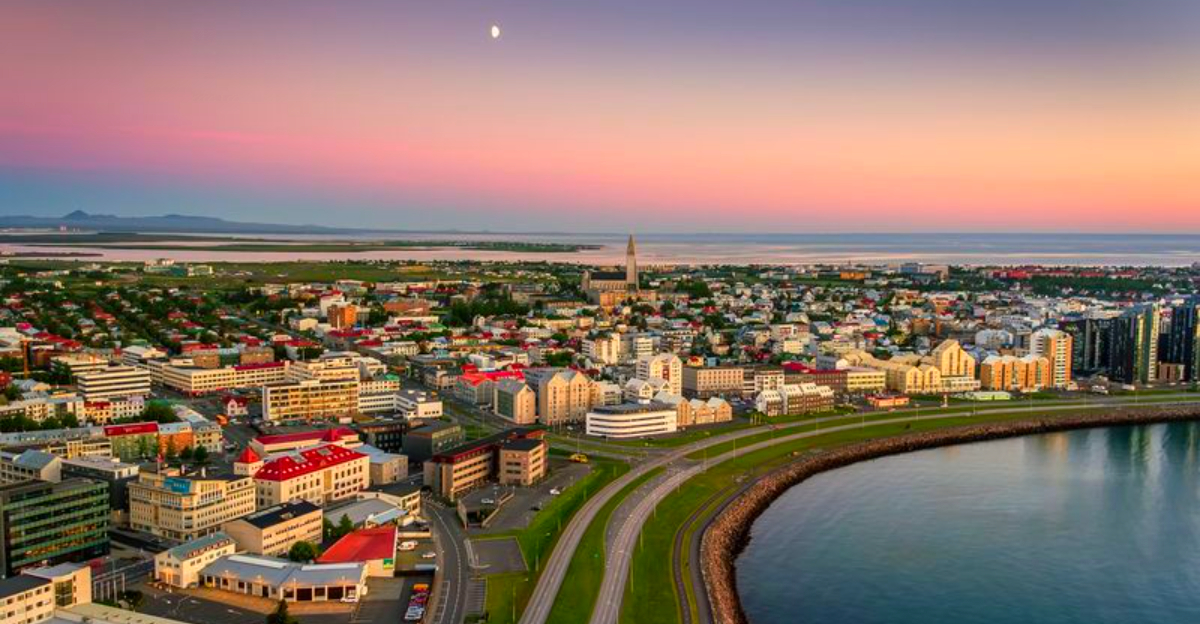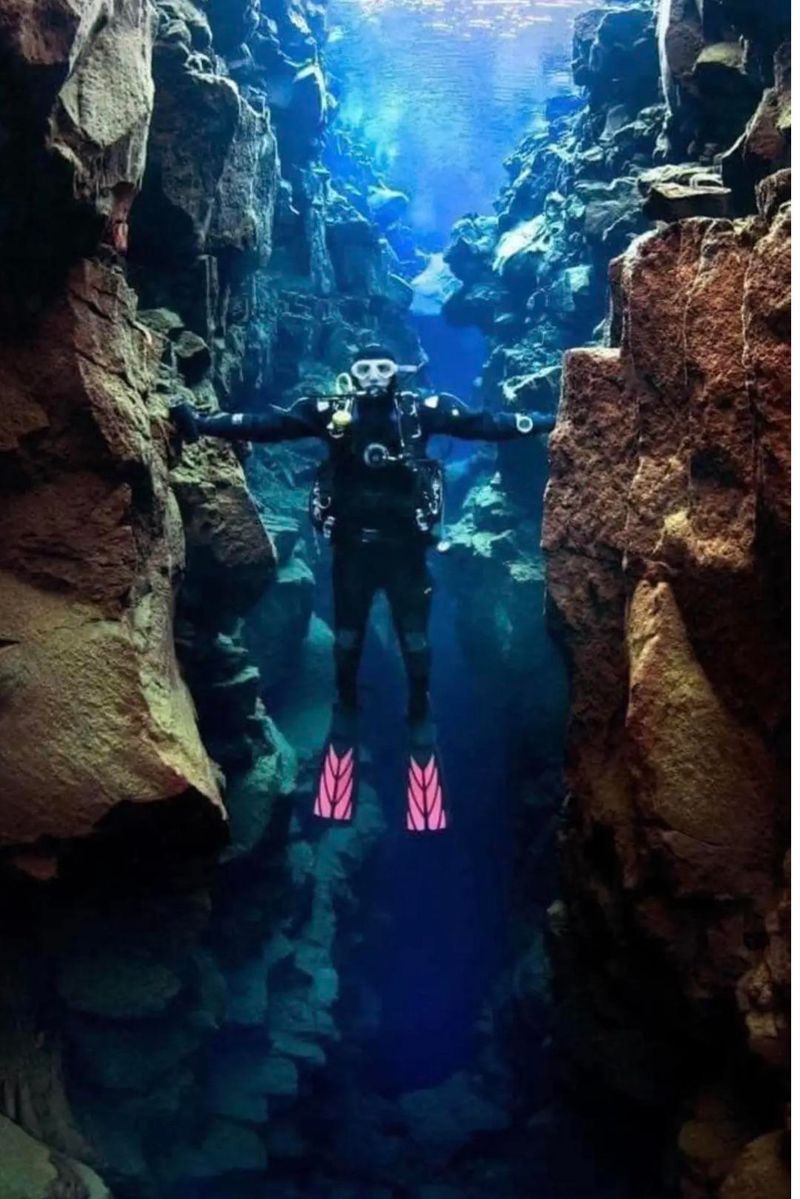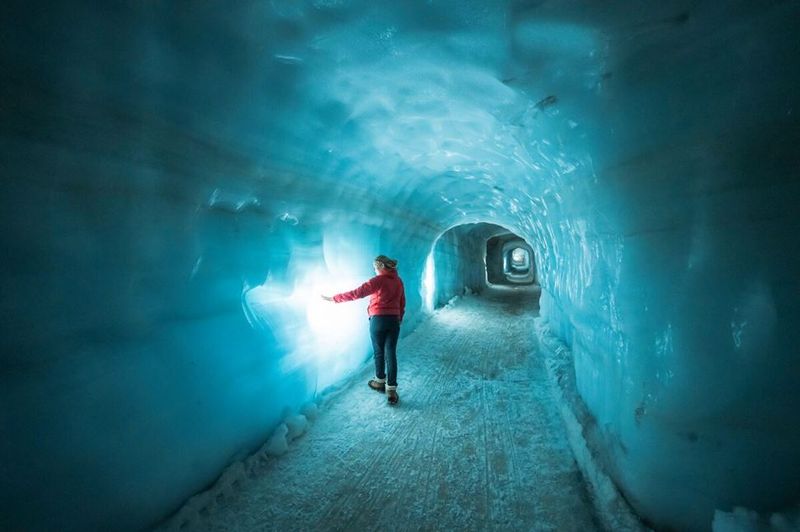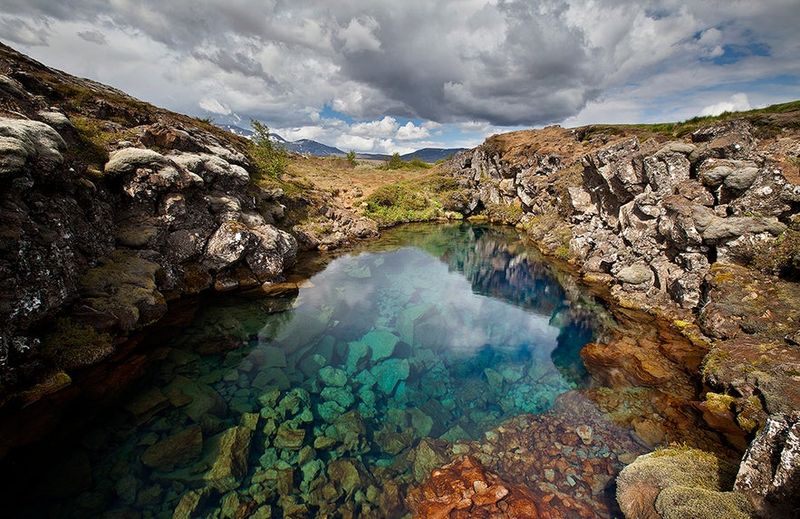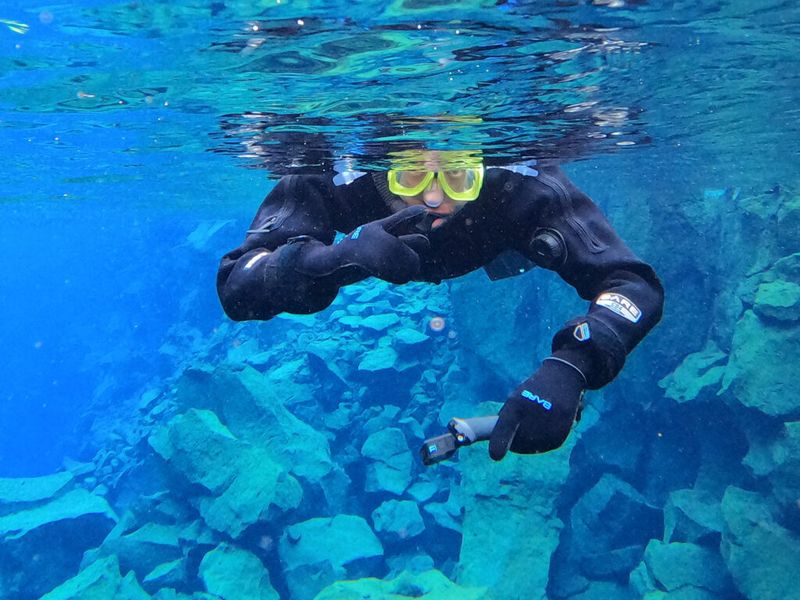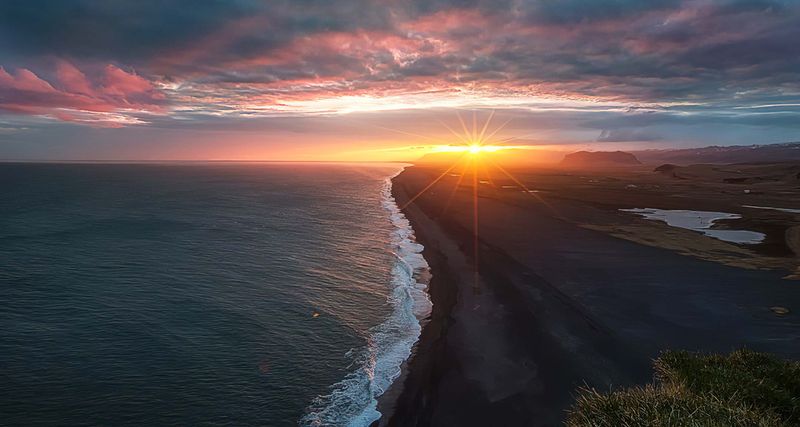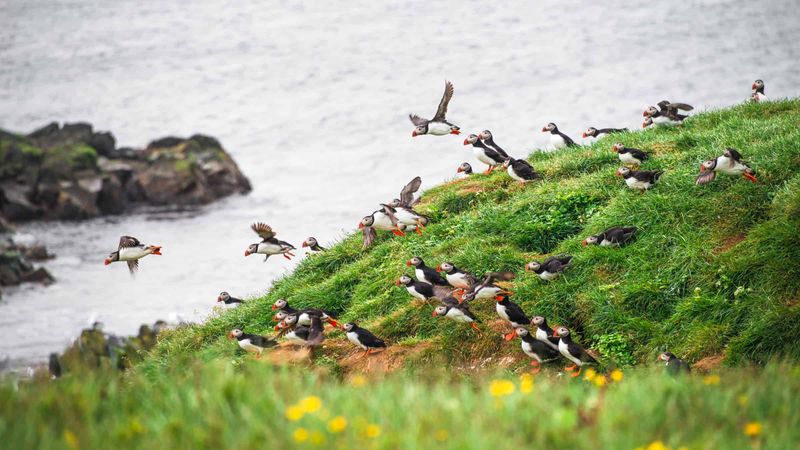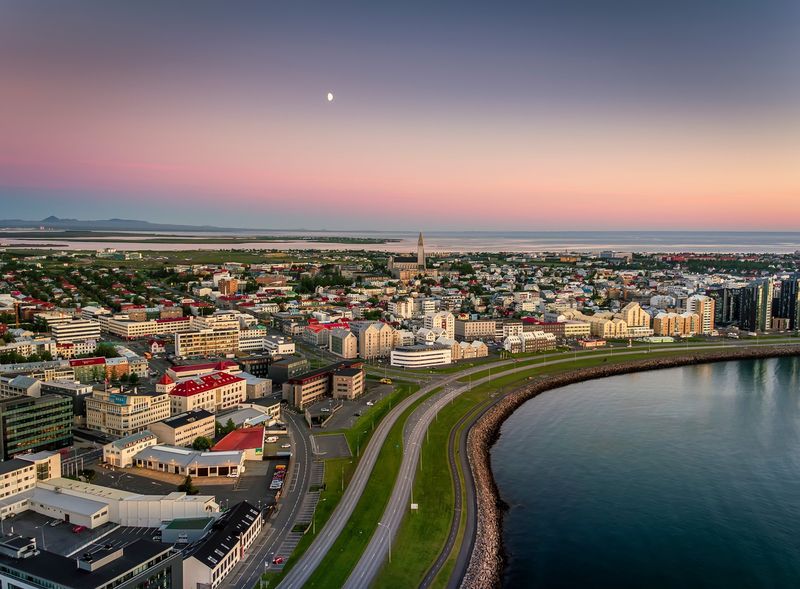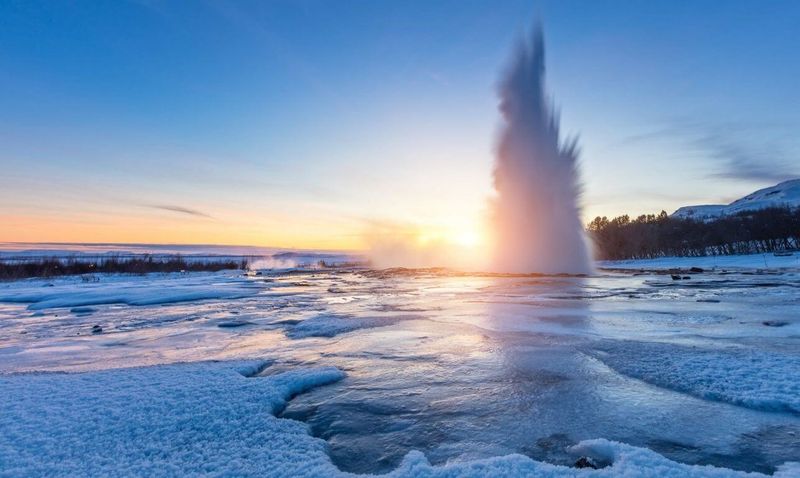Iceland is one of the most remarkable places on Earth, where geology and nature create experiences found nowhere else. Imagine floating in crystal-clear water right between two continents, then staying up past midnight under a sun that refuses to set. This Nordic island nation offers both adventures in a single unforgettable trip. Whether you crave underwater exploration or endless golden-hour photography, Iceland delivers magic around the clock.
1. Snorkel or Dive Between Two Continents at Silfra
Silfra fissure in Þingvellir National Park lets you glide through water that sits directly between the North American and Eurasian tectonic plates. No other spot on the planet offers this kind of continental crossing by snorkel or scuba.
Visibility often stretches beyond 100 meters because the water filters through volcanic rock for decades before surfacing. That natural purification creates an underwater wonderland so clear you feel like you’re flying.
Temperatures hover around 2–4 °C year-round, so tour operators provide drysuits and thermal layers to keep you comfortable. The chill is worth it for a once-in-a-lifetime swim through Earth’s crust.
2. Understand Why Silfra’s Water Is So Incredibly Clear
Langjökull, Iceland’s second-largest glacier, feeds Silfra with meltwater that begins a remarkable underground journey. The water travels more than 50 kilometers through porous lava rock, taking anywhere from 30 to 100 years to reach the fissure.
During that slow passage, volcanic minerals and natural filtering remove nearly all impurities. By the time the water emerges at Silfra, it’s almost pure—creating legendary clarity that divers and snorkelers rave about.
This geological patience is why you can see underwater details with such stunning precision. Few freshwater sites anywhere match Silfra’s transparency, making every dive feel otherworldly and serene.
3. Swim Inside a UNESCO World Heritage Site with Ancient History
Þingvellir National Park isn’t just a geological wonder—it’s where Iceland’s Alþing parliament was founded in 930 CE, making it one of the world’s oldest legislative assemblies. The park earned UNESCO World Heritage status for this deep cultural significance.
When you snorkel or dive at Silfra, you’re literally swimming through layers of history and earth science. The rift valley around you marks where continents pull apart, while the ground above hosted centuries of Viking-age debates.
Few places blend natural beauty and human heritage so seamlessly. Floating between tectonic plates while surrounded by such storied land adds extra weight to every kick and breath.
4. Plan Your Silfra Adventure Safely and Smartly
Snorkeling at Silfra requires a guided tour, and most operators set a minimum age around 12 years, though policies vary. Guides handle all safety protocols and provide the specialized gear you’ll need for cold-water immersion.
If you want to scuba dive, Þingvellir National Park rules demand an open-water certification plus a dry-suit certification specifically for Silfra dives. These requirements keep everyone safe in the chilly, unique environment.
Booking in advance is smart, especially during summer when slots fill quickly. Proper preparation ensures you focus on the incredible views instead of worrying about logistics or comfort during your continental swim.
5. Experience the Midnight Sun Phenomenon in Iceland
Near the Arctic Circle, the sun refuses to set at local midnight during peak summer months. Iceland enjoys bright nights from late May through early August, with the longest day falling around June 21 each year.
This extended daylight transforms how you explore—hikes, photography, and sightseeing can stretch well past midnight under soft, golden light. The landscape glows in hues that photographers dream about, and crowds thin out after traditional bedtime.
You’ll feel a strange energy when your body clock says “sleep” but the sky insists it’s still afternoon. Pack a sleep mask and embrace the freedom to roam whenever inspiration strikes.
6. Visit Grímsey Island for True 24-Hour Sunlight
While most of Iceland enjoys bright nights, Grímsey Island sits directly on the Arctic Circle and delivers genuine 24-hour sunlight. Around the June solstice, the sun never dips below the horizon—day and night merge into one continuous glow.
This tiny island offers a quieter, more remote experience than mainland Iceland. Birdwatchers love Grímsey for its puffin colonies, and the novelty of standing on the Arctic Circle adds a bucket-list thrill.
Reaching Grímsey requires a short flight or ferry ride, but the effort rewards you with an unbroken solar display. It’s the ultimate midnight-sun destination if you want the full Arctic summer spectacle.
7. Enjoy Almost-Daylight Nights in Reykjavík
Reykjavík doesn’t quite reach 24-hour sun, but it comes remarkably close. Around the solstice, sunrise happens near 02:55 and sunset around 00:03, with civil twilight filling the gap—so darkness never truly arrives.
Locals and visitors alike take advantage of these luminous “white nights” to explore without time pressure. Cafés stay open late, trails remain accessible, and the city pulses with a relaxed, festival-like vibe.
Bring blackout curtains or a sleep mask if you’re sensitive to light, because your hotel room might stay bright all night. Otherwise, embrace the freedom to wander Reykjavík’s streets whenever curiosity strikes you.
8. Combine Silfra and Midnight Sun in One Perfect Day
Silfra fits neatly into a Golden Circle day trip, so you can snorkel between continents in the morning and still have hours of bright evening light ahead. Add stops at Gullfoss waterfall and Geysir geothermal area for a packed, unforgettable itinerary.
After your dives and sightseeing, chase the midnight glow with a late-night hike or scenic drive. Iceland’s summer light lingers so long that you never feel rushed or pressed by fading daylight.
This pairing showcases Iceland’s dual magic: geological wonders beneath the surface and celestial wonders above. Few destinations let you cross continents underwater then photograph golden-hour landscapes at midnight.
